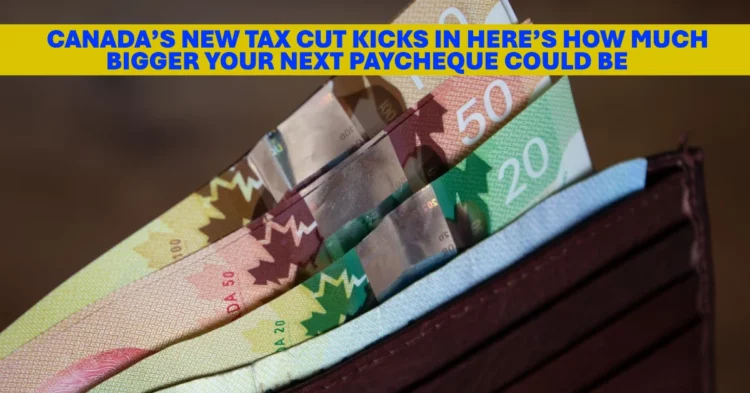A Mid-Year Tax Break That Starts Paying Off Immediately
Canadian workers will now start seeing a little more money in their paycheques, thanks to a newly implemented federal tax cut that quietly took effect on July 1, 2025. The personal income tax rate for the lowest bracket has been reduced from 15% to 14%, a seemingly small shift that could mean hundreds of dollars in extra take-home pay by the end of the year.
The Canada Revenue Agency (CRA) has already updated its payroll deduction tables, meaning employers are being urged to apply the new rate immediately—even though the change has yet to be passed into law. Implementation has begun early, with full support from the federal government.
Table of Contents
Who Benefits Most from the Tax Cut?
Nearly 22 Million Canadians Will See Tax Relief
According to Finance Canada, about 22 million taxpayers stand to benefit from this change. The majority of those savings will go to individuals earning less than $114,750 annually, with middle-income earners seeing the most noticeable boost in their net pay.
While the change represents just a one percentage point drop, the cumulative effect adds up. By the time the tax cut is fully phased in by 2026, the average individual could see savings of up to $420, or $840 per couple.
How Much More Will You Actually Take Home?
Examples Based on Biweekly and Monthly Pay Periods
For Canadians earning at least $57,375 per year—the upper limit of the first tax bracket—the tax cut translates to an increase of roughly:
- $16 per biweekly paycheque
- $35 per monthly paycheque
With 13 biweekly pay periods remaining in 2025, that could result in around $206 extra in take-home pay before the year ends. These figures assume that employers have already updated payroll deductions based on CRA’s guidance.
If your workplace hasn’t yet adopted the new rate, you won’t miss out entirely. Any unpaid difference will be refunded when you file your 2025 tax return next spring.
Why the Government Is Making This Change
Addressing Cost-of-Living Concerns
The federal government says this tax relief is designed to help Canadians manage rising living expenses, put more money back into the economy, and support long-term financial growth.
“Every Canadian should be able to afford necessities, feel secure, and get ahead financially,” said Finance Minister François-Philippe Champagne when the tax cut was announced earlier this year. He described the change as a key step toward improving affordability and boosting economic resilience.
Final Canada Carbon Tax Rebate 2025: How Much You’re Getting and Why This Is the Last Payment
CRA Federal June Benefit Payments 2025: Amount, Eligibility, Payment Dates Explained
Canada Workers Benefit Payment Increase 2025: Who Gets the Boost, How Much You’ll Receive, and When
What to Expect in 2025 and Beyond
Transitional Tax Rates and Future Savings
Because this rate reduction takes effect halfway through 2025, the average effective tax rate for the year will be 14.5%. Starting in 2026, Canadians can expect to benefit from the full 14% rate across all four quarters.
Employers are being encouraged by CRA to adjust payroll deductions immediately, so most workers should start seeing the difference by their next pay cycle.
Bottom Line: A Small Shift That Could Add Up Quickly
For millions of Canadians, this tax cut could mean a small but meaningful financial boost in 2025. While it might not be life-changing, an extra $200 or more could go a long way in helping cover rising grocery bills, transportation costs, or household expenses.
Keep an eye on your next paycheque—if the new deduction rate is applied, your take-home pay may already be higher.

